No products in the cart.
Stretch Your CapEx Budget with Fiber Equipment Rentals and Leasing
Home Stretch Your CapEx Budget with Fiber Equipment Rentals and Leasing
- Home
- Resource Hub
- Millennium Blog
- Stretch Your CapEx Budget with Fiber Equipment Rentals and Leasing
STRETCH YOUR CAPEX BUDGET
Reducing fiber construction CapEx on projects is a priority throughout the year, but even more so as the construction season unwinds. That’s when fiber network owners and contractors increasingly reach out to us at Millennium Equipment concerned about budgetary constraints and what is available, or not, to spend on essential capital equipment like fiber blowers and fiber testing equipment. Even when CapEx is low or drained, having the right equipment is still needed to complete fiber construction projects coming through the pipeline. How fiber contractors and network owners approach their fiber equipment planning and acquisition seriously impacts finances and the ability to handle urgent fiber projects. Because equipment planning should be strategic, understanding all your options is crucial.
Understand the difference between CapEx and OpEx in fiber construction
Fiber equipment acquisition strategies can make or break your budget at the end of the year. This chart will help you break down the difference between CapEx and OpEx in fiber network construction.

DEFINITION
Costs of acquiring long-term assets that benefit fiber networks and contractors for more than one year.
EXAMPLE
Buying fixed assets, including:
- Fiber optic equipment
- Office buildings
TAXES
*consult a tax professional to ensure you’re handling CapEx correctly.
Not fully deductible in one year. Tangible assets are depreciated
over time*, including:
- Trailers
- Lashers
- Fiber blowers
- Fiber pullers
- Fusion splicers
- Testing equipment
ACCOUNTING
One-time purchase paid upfront. Listed as property and equipment.
BENEFITS
Long-term advantages include knowing you’ll have the equipment for every upcoming project, and although upfront costs are high, the total purchase price is the lowest over the long run.
CONS
Capital equipment has a significant upfront cost for networks and contractors and reduces cash reserves.

DEFINITION
Day to day operational expenses of building and running a fiber network.
EXAMPLE
Paying for ongoing expenses needed to run a fiber business, including:
- Fiber optic equipment repairs and maintenance
- Equipment rental fees
- Rent
- Wages
- Salaries
TAXES
*consult a tax professional to ensure you’re handling OpEx correctly.
Operating expenses are entirely tax deductible in the same year that they are made. Could potentially save on taxes.*
ACCOUNTING
Regular expenses that you pay as you go (monthly or yearly). Operating expenses and selling, general, and administrative expenses (SG&A).
BENEFITS
Fiber networks and contractors have more flexibility with OpEx than CapEx because they can adjust OpEx in response to market conditions. Rentals, leasing, and rental purchase options (RPOs) provide needed flexibility during uncertain market conditions, because you can scale without significant upfront costs.
CONS
Operational expenditures like salaries, rent, and fixing capital equipment are short-term expenses without long-term benefits.
How To Stretch Your Capital Equipment Budget with OpEx
Renting, leasing, or locking in an RPO on fiber equipment can be an effective way to lower CapEx. Many medium to small fiber networks rent or lease fiber equipment so that the expense is accounted for as an OpEx when CapEx runs low. Watch the video below to learn how to leverage OpEx to reduce CapEx.
Capital Equipment Strategies You Should Consider Heading Into 2024
Facing broadband funding waits, long bank credit applications, and a growing credit crunch from banks, fiber networks and contractors face added challenges in fiber equipment planning and acquisition strategies. Creating a capital equipment plan that includes using rentals and leasing strategically to lower CapEx can help you do more with a tighter budget or as you near the end of the year. Before you create your plan, consider incorporating these trends from mid- to large-size fiber optic contractors we gathered from the 2023 Power & Communication Contractors Association (PCCA) into your capital equipment plan heading into 2024.

Allows you to supplement your equipment while reducing risk by eliminating the cost of ownership, like surprise repairs and equipment downtime.
Gives you affordable monthly payments that reduce your annual tax burden. Also conserves your capital and allows you to upgrade equipment and scale without significant upfront costs.
Get your equipment now and build up equity as you make payments.
Are you looking for guidance on your capital equipment planning? Contact our experts at Millennium for a free consultation on what strategy makes sense for your business.
Author: Joe Valen
Director of Rentals & Leasing

- Feasibility Studies & Network Design Plans
- Financing & Grants
- Project Resource Management
- Material Supply & Logistical Planning
- Equipment Leasing & Rentals

